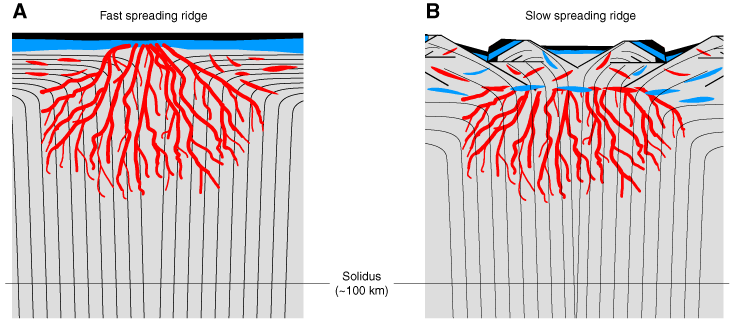
Figure F6. Synoptic diagram illustrating the inferred difference between igneous accretion and seafloor spreading at fast- vs. slow-spreading ridges. Lightest pattern represents residual peridotites. Red areas represent dunites formed as conduits for melt transport in the shallow mantle. Blue areas represent gabbroic plutonic rocks. Black areas represent volcanic rocks. A. Based in part on observations in the Oman ophiolite, where impregnated peridotites and gabbroic plutons are rare in the mantle section more than ~500 m below the crust–mantle transition zone and where plate spreading in the shallow mantle is accommodated by penetrative ductile deformation of residual peridotites (Kelemen et al., 2000). We infer that this represents a medium- to fast-spreading ridge, where the conductive boundary layer beneath the ridge axis does not extend far below the base of igneous crust. B. A hypothetical end-member scenario for igneous accretion and seafloor spreading at a slow-spreading ridge, based on our synthesis of results from Leg 209, together with other previous and ongoing research as described in the text. Impregnated peridotites and gabbroic plutons begin to form at the base of the conductive boundary layer, >15 km below the seafloor. Throughout much of this conductive boundary layer, at less than ~1100° or 1000°C, plate spreading is accommodated by localized deformation along mylonitic shear zones and—at lower temperatures—brittle faults. These shear zones and faults rotate and uplift passive blocks of residual peridotite that host gabbroic intrusions, some of which are exposed on the seafloor. In such a scenario, the thickness of igneous crust above the seismic Moho will be less than at fast-spreading ridges, and—because of the lack of penetrative deformation and the variable magnitude tectonic rotation—seismic anisotropy in the uppermost mantle will be less than in plates formed at fast-spreading ridges.


![]()